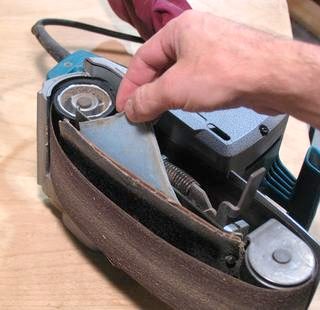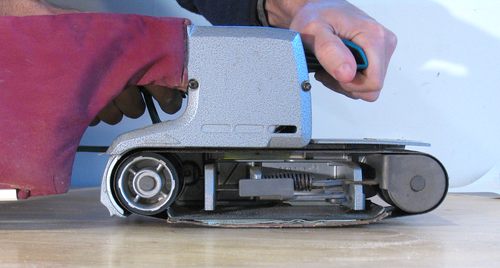 Of course, I could always pick up the belt sander from the surface every time I
reverse its motion, but that would be very inconvenient.
Of course, I could always pick up the belt sander from the surface every time I
reverse its motion, but that would be very inconvenient.
 Of course, I could always pick up the belt sander from the surface every time I
reverse its motion, but that would be very inconvenient.
Of course, I could always pick up the belt sander from the surface every time I
reverse its motion, but that would be very inconvenient.
However, With my Makita belt sander, there is a trick to avoid some of these marks.
The belt sander has a leather pad, which is slippery on the bottom, attached
to the plate between the belt wheels. This pad is only attached on the leading
edge. Its quite easy to fold up a piece of paper towel or shop towel,
and slip it in under the leather pad.

This pad provides for a very soft and convex shape pushing behind the belt.
This sort of thing also makes it easier to focus on certain areas that need sanding, even if some of these areas need to be sanded down a fair bit. Basically, enables sanding slightly concave areas on a table top, which can be very handy.
This is also very handy for re-sanding specific spots on a wooden floor, as it allows good blending of the sanded and non-sanded areas.